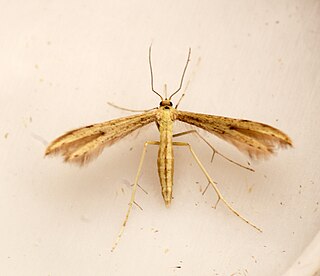
Adaina microdactyla is a moth of the family Pterophoridae first described by Jacob Hübner in 1813. Also known as the hemp-agrimony plume, it is found in Africa, Asia and Europe.
Adaina microdactoides is a moth of the family Pterophoridae. It is known from Luzon and Mindanao in the Philippines.
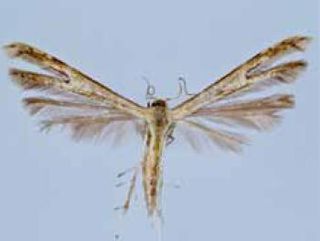
Adaina is a genus of moths in the family Pterophoridae.

Adaina bipunctatus is a moth of the family Pterophoridae. It is found in the United States, including Florida and Mississippi. It has also been recorded from Trinidad, the West Indies, Brazil and Ecuador.
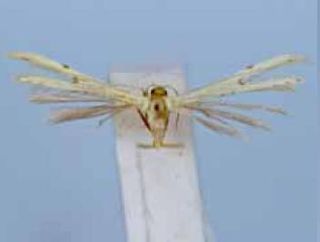
Adaina simplicius is a moth of the family Pterophoridae. It is found in the United States, Brazil, Costa Rica, Ecuador, Paraguay and Puerto Rico. It was introduced to South Africa for study as a biological control agent for Eupatorium macrocephalum.
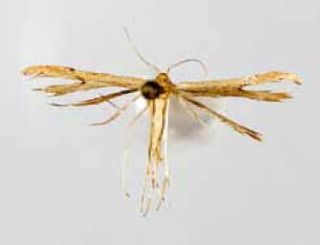
Adaina zephyria is a moth of the family Pterophoridae first described by William Barnes and Arthur Ward Lindsey in 1921. It is found in the United States (California), Mexico (Oaxaca), Peru (Huanaca), Venezuela, Bolivia, Costa Rica and Ecuador.

Adaina thomae is a moth of the family Pterophoridae. It is found in Saint Thomas, Brazil, Hispaniola Mexico and Puerto Rico.

Adaina beckeri is a moth of the family Pterophoridae. It is found in Costa Rica and Belize.
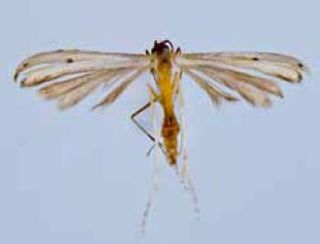
Adaina hodias is a moth of the family Pterophoridae. It is found in Brazil, Costa Rica, Venezuela (Mérida), Ecuador and Mexico.

Adaina fuscahodias is a moth of the family Pterophoridae. It is found in Mexico (Veracruz), Brazil and Costa Rica.

Adaina bernardi is a moth of the family Pterophoridae. It is found in Costa Rica and Mexico.

Adaina planaltina is a moth of the family Pterophoridae. It is found in the Federal District of Brazil.

Adaina invida is a moth of the family Pterophoridae. It is found in Brazil, Costa Rica and Panama.
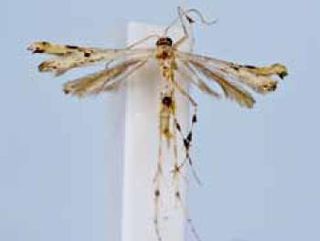
Adaina parainvida is a moth of the family Pterophoridae. It is found in Costa Rica and on Jamaica.
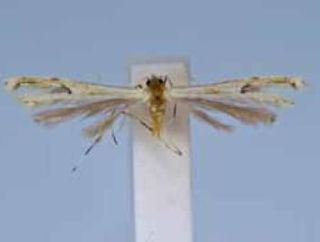
Adaina costarica is a moth of the family Pterophoridae. It is found in Costa Rica.

Adaina excreta is a moth of the family Pterophoridae. It is found in Peru (Carabaya), Argentina and Ecuador.

Adaina everdinae is a moth of the family Pterophoridae. It is found in Salta Province, Argentina.

Adaina obscura is a moth of the family Pterophoridae. It is found in Costa Rica.
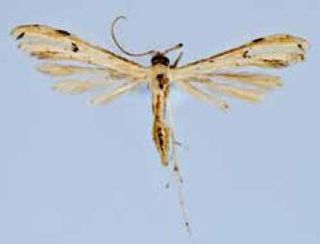
Adaina ipomoeae is a moth of the family Pterophoridae. It is found in Cuba, Jamaica, Puerto Rico, Guadeloupe, the Dominican Republic, Grenada, and Florida.

Adaina scalesiae is a moth of the family Pterophoridae that is endemic to the Galapagos Islands, where it was discovered by Bernard Landry on Bella Vista on April 1, 1992, and on May 25 of the same year on the island of Santa Cruz. The species was also found in Volcan Darwin, a province 15 kilometres (9.3 mi) from Puerto Villamil, on May 25, and 400 metres (1,300 ft) above sea level on Pinta Island where it was found from March 13 to 21. The species is attracted to various lamps including mercury-vapor lamps.


















